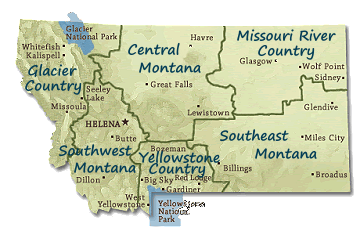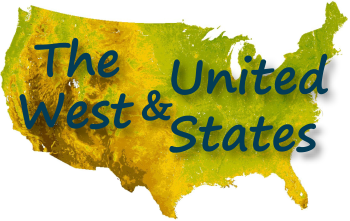
|
Putting the "Public" Back In "Public Trust" "Government
loses its claims to legitimacy
when it fails to fulfill its obligations." - Martin L. Gross
Legitimacy
is considered a basic condition for governing, in this case, our
Montana Fish, Wildlife & Parks. Without legitimacy, a government
will suffer legislative deadlock(s) and eventual collapse. I believe
that we are seeing this collapse in FWP, though to be honest, it
is not entirely of FWP Helena Administration's doing, our Montana
special interest legislators have had a hand (rather stranglehold)
in that as well.

Montana State Parks visitation could reach all-time high in 2015 "Montana State Parks visitation has climbed for the fifth straight year and is on track to set a record in 2015. This follows a national trend toward greater outdoor recreation use, said Betsy Kirkeby, public relations specialist for Montana State Parks. 'We’ve broken the record for the last four years,' Kirkeby said. 'And it’s steadily going up.' "
"Glacier National Park officials reopened an 18-mile stretch of the Montana park’s most heavily trafficked roadway on Friday, more than two weeks after a wildfire forced its closure during the busiest time of the year."
"An oil exploration company is proposing to drill a 10,000-foot vertical test well in the Tendoy Mountains, eight miles west of Lima in extreme southwestern Montana. Lima Exploration Co., a subsidiary of the Denver-based Great Western Oil and Gas Co., applied for a drilling permit with the Bureau of Land Management on July 13, said David Abrams, public affairs specialist for BLM in Butte. Scot Donato, manager of regulatory affairs and environmental health and safety for Great Western Oil and Gas, said if the company is successful, the future could bring 10 to 20 wells to the area." And you thought domestic sheep pneumonia was the only threat to our Bighorn Sheep populations here. Missoula wilderness therapy program works with troubled teens, regardless of income "InnerRoads Wilderness Program in Missoula is one of the only nonprofit wilderness therapeutic intervention organizations in the country that offers a sliding-fee scale so that troubled teenagers from poor families have the same access to help as wealthier kids. That help comes in the form of grueling, six-week backpacking trips in some of Montana’s remotest reaches, where youth learn to make fires without lighters or matches, communicate their feelings, channel their anger and tackle their most serious issues head-on. It’s not easy for them, and it’s no cakewalk for the instructors either." Students find fence-mending brings Bitterroot ranches together "Sometimes, bad fences make better neighbors. The traces of past ranching along the Bitterroot River are getting an upgrade that helps today’s cattle operations, wildlife researchers and young students learning about both... Bart and Wendy Morris and their Oxbow Cattle Co. wanted to apply new herding and fencing methods to their grass-fed beef cows. That meant pulling off much of the old barbed wire and replacing it with a “wildlife friendly” design that combines barbed and smooth wire. The fence can be four strands wide and pointy for the two weeks when cattle need to be kept in place on a pasture, or compressed to two strands for the other 50 weeks of the year so elk and deer can move freely. In addition to hosting professional researchers, MPG Ranch also teams with Missoula-based Ecology Project International to give young people four-week intensive outdoor learning experiences." Click for more information on Wildlife Friendly Fences
I smiled, because I always carry around all these various manuals and studies with me in my large olive green bag, what someone once referred to as my "war chest". Kevin had a copy of the 2010 Montana Bighorn Sheep Conservation Strategy with him on the table. During the discussion of FWP strengths, weaknesses, what they should be doing, Hurley brought up, what others have voiced, including retired FWP biologist Tom Carlsen, who primarily wrote the strategy, that the strategy needs to be implemented. Another example of the Helena politics failing to fulfill its obligations to our wildlife, scientific wildlife management - for future generations.
The morning that the BLM Cadastral Survey was filed with the Federal Register, Aug. 4th, I called for a copy. This is basically 3 maps of locations of the brass markers, monument rock piles (collars) and blazed trees - no documentation of the trespasses since the investigation is ongoing. There were 2 PDFs of descriptions (survey speak) of the same, except, one PDF does mention, "The locational calls to fences contained herein are given as ground conditions existed at the time of survey. Subsequent discussions have begun, during the construction of this record, indicating the potential for many of the fences to move." The other PDF mentions an additional type of violation - the unauthorized removal of any government survey monument or marked trees, "An iron post 30 ins. long, 3/4 in. diam., found lying loose nearby." And another, "The remains of the original monument, an iron post, 20 ins. long, 1 in. diam., with brass cap mkd 1/4 S14 S23 1914 was found lying loose nearby in an area disturbed by recent earthmoving work." So the illegally unpermitted caterpillar that was bulldozing hundred of trees, vegetative materials and blading the ground, uprooted survey monuments on our public lands. I wonder how many blazed trees got uprooted or other markers to far removed for the metal detector to pick up? I will get these documents up this week with the documentation from the Durfee Hills helicopter trip, it's been kind of game damage/elk shoulder season documentation busy. "It is unlawful for the unauthorized alteration or removal of any Government survey monument or marked trees: 'Whoever willfully destroys, defaces, changes, or removes to another place any section corner, quarter - section corner, or meander post, on any Government line of survey, or willfully cuts down any witness tree or any tree blazed to mark the line of a Government survey, or willfully defaces, changes, or removes any monument or bench mark of any Government survey, shall be fined under this title or imprisoned not more than six months, or both' (108 Stat. 1796, 2146; 18 U.S.C. 1858)" Proposed BLM-Wilks land swap bad deal for average Montanans "We are average working Montanans, who have a personal interest in the proposed land exchange between the Wilks brothers and the Bureau of Land Management. We legally access and use the land the Wilks brothers want. This trade concerns us and should concern everyone else too."
"What's it like to be in charge of over a million acres of public lands, including 125 miles of Missouri River and 245,000 acres of Fort Peck reservoir? What if the budget you have to manage these lands seems to get smaller by the year? That’s the challenge facing Paul Santavy, project leader for the Charles M. Russell National Wildlife Refuge, the second largest refuge in the lower 48 states and the largest refuge in Montana."
"The federal government’s controversial coal program is the subject of a public listening session in Billings Tuesday. It’s the first of four planned throughout the heart of American coal country. The Department of Interior is encouraging the public to enter the fray... 'How much royalties come back to the taxpayers? What's it take to administer the coal program, and are the current royalties appropriate for the work that's done, and is it an appropriate rate of return to the taxpayers?' The meeting begins at 1:00 p.m. Tuesday at the Hampton Inn in Billings." 
The EPA Accidentally Turned This River Toxic—And Orange "Since Wednesday morning, a ribbon of bright orange water has been making its way down the Animas River in southwest Colorado. The cause? A million gallons of gunk pouring out of an abandoned century-old mine. The Environmental Protection Agency is already on the scene, though. Because, well, they caused it. Yeah, oops... The abandoned mines in the area have long been a problem, filling up with acidic wastewater that leaches heavy metals out of rock and leaks into the river—a slow-motion environmental debacle. And the EPA has been trying to designate the mines a Superfund site for years, only to come up against local resistance. The mines still aren’t on the Superfund list, but the EPA has been trying to them clean up anyway. That’s why a crew was digging around the Gold King Mine—they starting to investigate leaks when the mine’s plug blew, turning the slow-motion problem into a fast-moving, highly visible advertisement for fixing the problem." Wastewater from Colorado mine reaches New Mexico Thousands of mines with toxic water lie under the West "Beneath the western United States lie thousands of old mining tunnels filled with the same toxic stew that spilled into a Colorado river last week, turning it into a nauseating yellow concoction and stoking alarm about contamination of drinking water. Though the spill into the Animas River in southern Colorado is unusual for its size, it's only the latest instance of the region grappling with the legacy of a centuries-old mining boom that helped populate the region but also left buried toxins."
|
10/08/2015 Enhancing
www.EMWH.org For More EMWH
|
